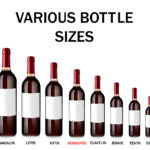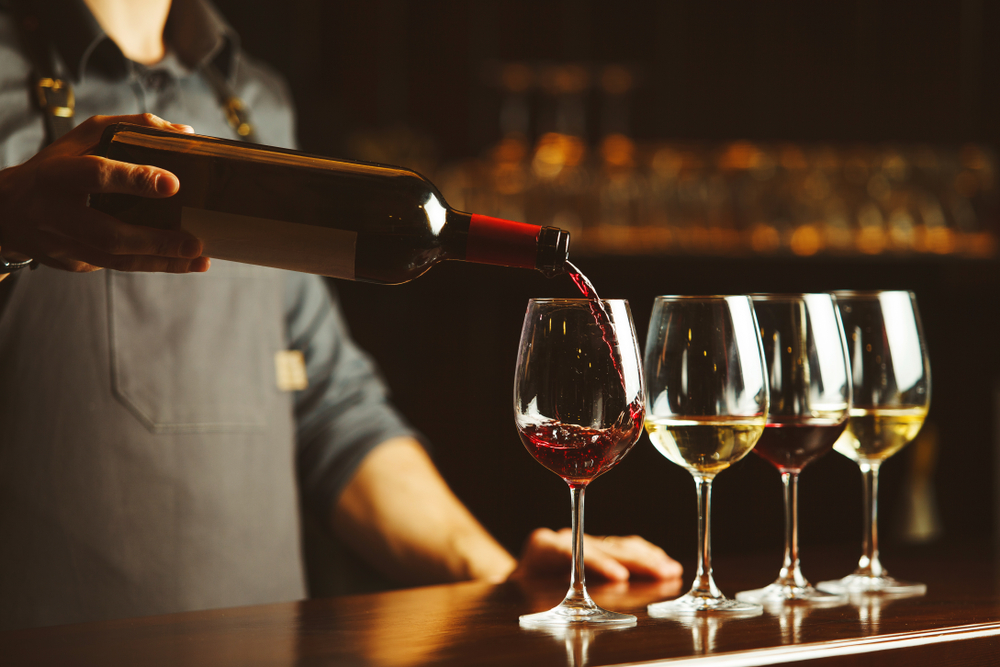It’s a Friday night (or any other 24-hour period during the week that ends in “day”) and you’re relaxing with friends… and wine. There are stories and laughter, and one glass leads to another. Before you know it, you’ve polished off a bottle, but you don’t feel the least bit tipsy.
What gives?
There are many factors to vino and its intoxication prowess. Just how much will (or won’t) get you drunk?
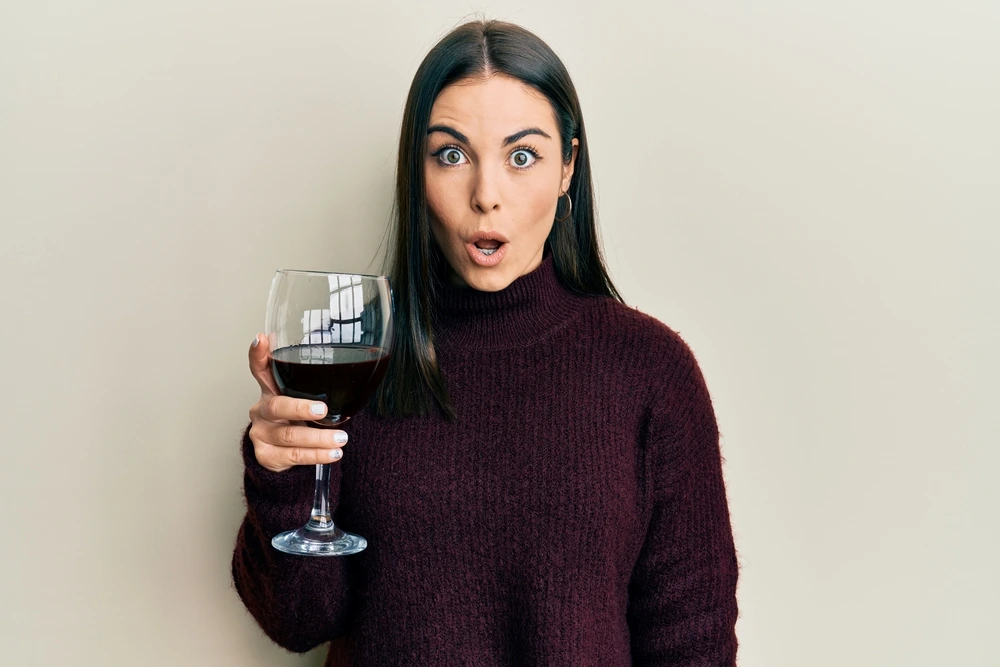
Wine and Alcohol Content
When wine goes through fermentation, the yeast turns the grapes’ sugars into ethanol and carbon dioxide or a by-product better known as the vino’s alcohol content.
You know, that percentage you see on the label.
If for instance your bottle of wine has 5% alcohol, that means if you (hypothetically, without any fancy equipment) poured it into 100 equally-sized tiny cups, 5 of them would have alcohol and 95 of them would have everything else.
How is Alcohol Measured?
Ready to pull out your high school chemistry book?
Here you go: wine, like any other spirit, uses the standard measurement of alcohol by volume (ABV) to assess the percentage of ethanol.
Or more scientifically, the number of pure alcohol milliliters in 100ml.
This precise computation is calculated using a handy little tool called a hydrometer that measures the Specific Gravity (SG) before and after fermentation (as sugar is converted to alcohol, the gravity will fall and so will the hydrometer).
So, if you had your own vineyard (or personal wine brew kit) and needed to determine the ABV, take the before SG and subtract the after SG, multiply it by 131.25, and you’ve got your ABV percentage.
How Many Glasses of Wine Does it Take to Get Drunk?
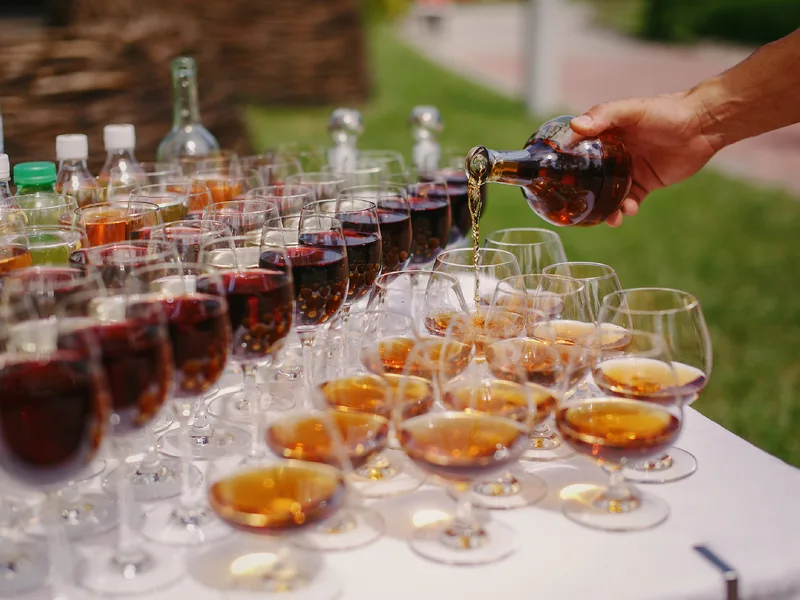
Although every state uses the same measure of legal blood alcohol limit (or more technically, blood alcohol concentration or BAC) as .08 for DUI, DUII, or DWI.
Some do differ on the enhanced penalty BACs (some are as high as .2!), fines, fees, and law details. No matter how you pour it (or how many acronyms you use), typically a couple glasses will tip the limit.
If you’re male, that means 3 glasses within an hour of average ABV wine. If you’re female, you’ll only need 2 to be considered legally drunk.
How Much Alcohol is in Your Wine?
It all comes down to the grapes.
Those that hang on the vine longer pack in more sugar, and more sugar means more alcohol.
So, just as ABVs can vary among different types of alcohol, the same holds true within types of wine.
For example, reds tend to have higher ABVs than whites. Full-bodied wines have more than light-bodied wines.
Most wines are about 11% to 13% alcohol, but they can go as low as 5.5% to as much as 20% ABV.
Since alcohol has a thicker, stickier consistency than water, higher ABV wines will have a richer, warmer, sweeter taste. And less alcoholic wines will be, well, lighter.
Low, Medium, High Alcohol Wines
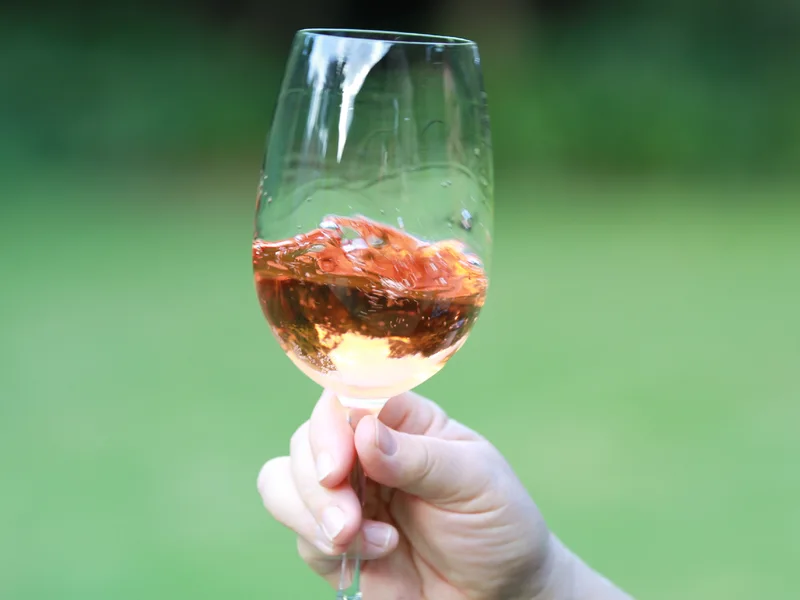
If you’re looking to see where your wine falls, take a look at this quick (and not at all a complete) list:
Low alcohol wine (under 12.5% ABV):
- Italian Asti
- Lambrusco
- Prosecco
- Pinot Gris Pét Nat
- Californian Zinfandel
- Muscadet
- Portuguese Vinho Verde
- Sparkling Rosé
- Clairette de Die Tradition
- La Folie NV
- OD Riesling
- Traminer Spätlese
- Esmeralda
- Vieux Vauvert
Medium alcohol wine (12.5% to 13.5% ABV):
- French Champagne
- Spanish Cava
- Spanish Rioja
- Red and White Bordeaux
- Beaujolais
- Bourgogne
- New Zealand Sauvignon Blanc
- Côte du Rhône
- Chianti
- Dolcetto
- Barbera
- Nebbiolo
- Rosé
- Value Reds
- Pinot Noir
High alcohol wine (13.5% to 14.5%, and above):
- Sherry
- Italian Barolo
- Australian Chardonnay
- California Viognier
- California Petite Sirah
- Argentine Malbec
- Zinfandel
- South African Chenin Blanc
- Shiraz
- Grenache-Syrah-Mourvèdre (GSM)
- Late Harvest Dessert Wine
- Chilean Merlot
- Port and Tawny Port
- Banyuls and Maury
- Maderia
- Marsala
- Aromatized wine
- Other fortified wines
Which of These Alcohol Content Levels is Best?
“Best” is somewhat subjective.
If you like bolder, richer flavors then that’s the best option for you.
Some say lighter, less alcohol wines pair better with food, giving them a fair chance to shine, and the wine is just a complement or an enhancer to the flavors of the meal.
Plus, you can typically drink more glasses of the lighter ABV variety with the same effect as one glass of high-alcohol wine.
How much of the lighter is a personal thing… it all depends on your alcohol tolerance factors.
Alcohol Tolerance Factors
There are many factors that affect how vino is going to affect you.
From how much you weigh to how much you’ve eaten, whether you’re a woman or a man, young or old, Asian or Caucasian, the list seems endless.
Let’s take a look at some top influences.
Your Age
Unlike a lot of other things that change (read: slow down) as you get older, your ability to feel the effects of alcohol might actually increase from one decade to the next.
As we age, many of us carry a few extra pounds and less muscle, so there’s higher blood alcohol concentrations in your body that take longer to leave your system.
Not to mention, changes in the brain’s wiring can make it easier for wine to affect you as you add years.
Simply put: that glass of wine you have when you’re in your 30s or 40s will affect you differently than a glass (or 2) when you’re in your 20s.
Your Gender
Sorry gals, but women have less total body water, generally more body fat, and less dehydrogenase (an enzyme that breaks down alcohol in the stomach) than men.
So there are higher concentrations of alcohol traveling through the bloodstream for the same amount of wine consumed.
Hormones also play a role. Right before menstruation, women will have a more difficult time processing alcohol.
Also, men outweigh the women in tolerance, even when the same factors seem to be in play.
For instance, a 140-pound woman can drink 2 glasses of wine an hour and her blood alcohol level would be around 0.48.
Compare that to a 140-pound man, and his alcohol level is only 0.36.
In short, females will tend to feel the effects of wine much sooner than a male.
Your Weight
Simply put: more weight equals more tolerance.
Generally, you can metabolize one drink an hour.
But if you’re heavier or have a larger body mass index, it may take 2, 3, or even 4 glasses a wine before you’d feel the effects.
On the flip side, if you’re smaller in stature, it may take less time and less wine to feel a little tipsy.
How Much Muscle You Have
Just like weight, the more muscle mass you have the more tolerant you will be.
Why? Muscles are about 75% water and, like ice cubes, will eventually absorb and dilute the alcohol.
Your Ethnicity
While people of East Asian descent are more likely to have an inherited genetic mutation that causes alcohol intolerance or makes them more likely to feel the effects of alcohol, Native Americans have a higher probability of developing an alcohol use disorder.
But they’re not the only ones.
Caucasians consume more alcohol than any other ethnic groups.
However, Hispanics are the biggest binge drinkers, followed by Caucasians, multiracial, African-Americans, and Asians.
Your Health
If you’re sick, it’s like a domino effect.
The first one to fall is dehydration… which, when mixed with alcohol, can increase your blood alcohol level.
You add in that your liver isn’t as great at eliminating waste when you’re low on water and that intensifies it even more.
Plus, it’s also likely you’re taking medications, which can compound it on top of that.
And add fatigue, and you’ve magnified your tolerance once again.
Metabolic Tolerance
Metabolic tolerance is just a fancy way of saying the rate that your body breaks down alcohol.
Everyone is a little different, but the average is about 170 to 240 mg a day for someone who weighs in at 150-155 pounds. In other words, about one drink per hour.
And like other tolerance factors, this can be affected by gender, body composition, the amount of vino that was consumed, amount of food eaten, and how well the liver produces dehydrogenase enzymes that break down alcohol.
Your Empty or Full Stomach
Unlike food, alcohol isn’t digested; it absorbs into the bloodstream through the stomach and small intestines.
When you have food before drinking, it acts as a roadblock, slowing the alcohol from passing through too quickly.
On an empty stomach, there’s nothing to stop its forward momentum, so it enters the bloodstream much faster — at about a 2:1 rate, as a matter of fact.
It takes about 30 minutes for ABV to reach its destination when your stomach is empty and about 60 minutes when it’s full.
Your Medications
Just like any other drug, some prescriptions might not play well with others.
Drug effects can be additive (an expected result when you add together the effect of each drug), synergistic (the combination is a much larger effect than you’d expect), or antagonistic (the union is less than you expected).
Some painkillers and cold medicines have the synergistic effect when they’re mixed with alcohol, causing 10 times the expected tipsy results.
Your Mood
Yep, even your mood can affect how quickly you absorb alcohol.
Think of it as a psychoactive substance, meaning it can change the way we feel… typically, for the better… at least temporarily.
When you start sipping, your body overproduces dopamine (the feel-good hormone), which finds its way to the brain’s reward centers, helping happiness to be even happier and sadness, anxiety, anger, and loneliness to subside.
But like caffeine, that burst of joy can deteriorate and confusion, clumsiness, nausea, and dehydration takes its place.
What’s It Feel Like To Be Drunk?
Depending on many of the factors described above, everyone will feel the effects of alcohol differently… especially when it comes to adult grape juice.
Some describe it as a warm and cozy feeling, with a hint of relaxation, but not drowsiness.
Other wines go straight to their noggin’, making them lose their balance, be extra chatty, have low inhibitions, and woozy.
Still others experience slurred speech, mood and behavior changes, nausea, vomiting, depression, euphoria, rapid involuntary eye movement, rosy cheeks, dehydration, or in worse case scenarios, blackout.
Play It Smart: How to Work Out Your Alcohol Tolerance
So, you have that big event coming up (a wedding, office party, blind date) and you want to ensure you don’t embarrass yourself.
How do you test your tolerance?
First, try the Goldilocks method at home (with others, of course, ‘cause what’s the fun in doing it alone?).
Start with one glass, then 2, and so on until you start to feel the effects. This little litmus test will give you an idea of how much is just enough and how much is too much.
Believe it or not, there’s also an ethanol patch test that your healthcare provider can administer where they place a drop of ethanol on a gauze pad and tape it to your arm, wait a few minutes, then check for redness, swelling, or signs of itching.
For a less medical way (and not exactly accurate), you can also use a Blood Alcohol Content (BAC) calculator.
No matter how you test it, it all comes down to genetics.
If you can’t tolerate alcohol, no amount of weight or muscle gain will change it.
Unlike an alcohol allergy that’s an immune system response, alcohol intolerance is a metabolic disorder. And, well, you just can’t fight it.
Drinking and Enjoying More Without Getting Drunk

Just because you drink doesn’t mean you have to get drunk. You can still enjoy a glass or 2 by following some of these simple suggestions.
Slow Down
The faster you drink, the faster you’ll get intoxicated. So, slow down. Savor the flavor, enjoy the company and conversation, and just take it one sip at a time.
Your Glass
It may sound like an old wives tale, but the shape of your glass really does matter when it comes to drinking alcohol.
In one study, those who drank out of a straight glass took 60% longer to finish their spirits than those who used a curved glass.
In another study, bartenders (unknowingly… or at least, perceived to be unknowing) tend to pour up to 30% more alcohol into shorter, wide glasses than tall, slender ones.
Granted, this is a mixed drink compared to wine, but it may be worth it to try your vino in something slimmer or, (it probably goes without saying) smaller to drink less.
Drink Water
H2O is good any time you drink alcohol.
It keeps you hydrated (aka, lessens the chances of having a hangover headache) and it acts as a diluter to help flush out all the toxins.
Have Snacks on Hand
Alcohol has a tendency to create cravings… and wine is no exception.
From burgers to pizza, high fat, salty, and sugary foods usually top the list, and at large quantities (sometimes up to 30% more than when alcohol isn’t involved!).
Although the type of food you yearn for might not make the “healthy” list, having something to snack on while you’re drinking is a must.
Keep snacks like carrots and hummus, whole wheat toast or pita bread, plain rice with grilled chicken, air-popped popcorn, veggie panini, or bananas close by.
In Summary
Whether or not you set out to get drunk, knowing your alcohol tolerance factors, how much ABV is in your wine, and how much you drink can be the difference between a memorable evening, and well, a not-so-memorable one.
Take your vino seriously, but drink it safely.
- Shrimp Cocktail (and More) Wine Pairing Guide - 09/06/2022
- What Wine Serving Sizes Look Like: Standard Size and More - 08/06/2022
- How Much Sugar is in Wine: Glass and Bottle Sugar Content - 08/06/2022

